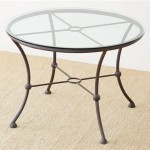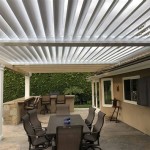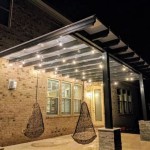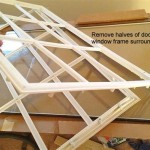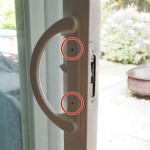How to Install Deck Boards Over Concrete Patio
Adding a deck over a concrete patio offers a beautiful and functional extension to your outdoor living space. It provides a warm, inviting surface for furniture and activities, while also elevating the area and creating a sense of separation from the concrete. Installing deck boards over a concrete patio is a relatively straightforward project that can be accomplished by a homeowner with basic DIY skills. This guide outlines the essential steps involved, ensuring a professional-looking and long-lasting result.
Creating a Solid Foundation
Before installing the deck boards, it is vital to create a stable foundation. This involves preparing the concrete surface to provide the necessary support and prevent future problems. The following steps will ensure a successful installation:
- Clean and Level the Surface: Thoroughly clean the concrete patio, removing any debris, dirt, or loose materials. Use a pressure washer for a deep clean, followed by a scrub brush to remove stubborn stains. Check for any unevenness or cracks in the concrete surface. Level out any minor imperfections with a self-leveling concrete patching compound.
- Install a Moisture Barrier: A moisture barrier is crucial to prevent moisture from the concrete from damaging the deck boards. Use a 6-mil polyethylene sheet or a similar material. Secure the barrier to the concrete with construction adhesive or heavy-duty tape, ensuring a tight seal around the perimeter. Overlap the sheets by at least 6 inches for maximum protection.
- Add a Layer of Gravel: Spread a 1/2-inch layer of gravel over the moisture barrier. This layer provides drainage and prevents the deck boards from coming into direct contact with the concrete. Compact the gravel to create a level and solid surface.
- Install Pressure-Treated Lumber: This step involves creating a framework to support the deck boards. Use 2x4 pressure-treated lumber to construct a perimeter frame around the concrete patio. Remember to use joist hangers or other appropriate fasteners to secure the framing to the concrete. Attach the joists to the frame, ensuring proper spacing for the chosen deck boards.
Choosing and Installing Deck Boards
The choice of deck boards significantly impacts the look and feel of the finished project. Consider factors like desired aesthetics, durability, and maintenance required when selecting the right material.
- Material Selection: Popular choices for deck boards include pressure-treated lumber, composite decking materials, and cedar. Pressure-treated lumber is affordable and durable but requires regular maintenance. Composite decking materials offer low-maintenance and weather-resistant options. Cedar offers a natural beauty and durability, although it comes with a higher price tag.
- Board Size and Spacing: Choose deck boards that complement the style and dimensions of your patio. Standard deck board sizes are typically 5/4" x 6" or 2" x 6". Spacing between boards should be consistent and allow for expansion and contraction due to temperature changes. A 1/4" gap is generally recommended for most deck board types.
- Installation Method: Install the deck boards perpendicular to the direction of the joists for added strength. Use deck screws or nails specifically designed for outdoor applications to secure the boards. Drive the fasteners into the joists at an angle, ensuring they are countersunk and covered with plugs or caps for a finished look.
Finishing Touches
Once the deck boards are installed, take the time to add finishing touches to enhance the appearance and functionality of your new outdoor space.
- Adding Deck Railings: For safety reasons, install railings around the perimeter of the deck, especially if there is a height difference from the concrete patio. Consider using pre-fabricated railing kits for ease of installation or building custom railings to match the style of your home.
- Staircases and Access Points: If you have a height difference between the concrete patio and the deck, you will need to build stairways for access. Use pressure-treated lumber or composite materials for the stairs and ensure adequate handrails for safety.
- Sealant and Stain: Protect your deck boards from the elements by applying a sealant or stain. A sealant will prevent moisture damage and premature decay, while a stain will enhance the color and richness of the wood. Ensure the sealant or stain is compatible with the chosen deck board material.
- Decorative Elements: Add finishing touches to create a welcoming atmosphere. Consider adding planters, outdoor lighting, or furniture to personalize the space.
Installing deck boards over a concrete patio is a rewarding project that transforms your outdoor living space. By following these steps and taking the time to choose quality materials and build a solid foundation, you can create a beautiful and functional extension to your home that will provide lasting enjoyment for years to come.

Diy Turning A Cement Porch Into Wood Deck Catz In The Kitchen
How To Build A Deck Over Concrete Porch Advantagelumber Blog

3 Deck Tips Over Concrete Trex

Diy Turning A Cement Porch Into Wood Deck Catz In The Kitchen

Installing Composite Decking Over Concrete Decks Com

Diy Turning A Cement Porch Into Wood Deck Catz In The Kitchen

Diy Turning A Concrete Slab Into Covered Deck Backyard Over Decks

Diy Turning A Cement Porch Into Wood Deck Catz In The Kitchen

How You Can Build A Wood Deck Over Concrete Porch
How To Build A Deck Over Concrete Porch Advantagelumber Blog
Related Posts


